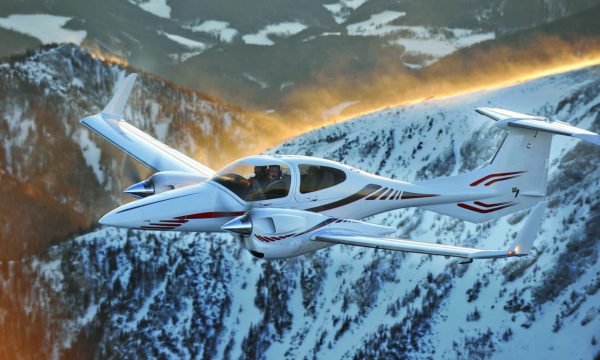

A great throwback to an AOPA interview between the then AOPA Editor-in-Chief, Tom Haines, and our former colleague Kevin Hawley about icing accidents and the protection provided by our TKS system.
Icing is a major cause for aircraft accidents across the globe. Our TKS system is designed to protect aircraft from icing conditions but a build-up of ice on an aircraft will take it out of the sky.
Frost, snow, freezing rain or drizzle on the leading edges of an airplane, like the tail, wings, propeller, windshield, antenna, vents, intakes and cowlings, can rapidly impair the smooth surface of the airframe. This changes the aerodynamics of the aircraft, increasing drag and decreasing lift. Severe structural ice can cause the aircraft to lose control, causing it to pitch or roll, making recovery impossible. In some weather conditions, carburettor icing can form and stop the engine.
TYPES OF ICE
The four main types of of ice formations that can cause an aircraft to crash: Clear, Glaze, Rime and Mixed.
Clear and glaze are very similar transparent types of ice, caused by the freezing of supercooled water droplets on the aircraft’s surface. They freeze gradually as they flow back over the leading edges, sometimes producing ‘horns’ on the wings.
Rime ice is rough, porous and brittle, looking more like spiky snow than ice. This is caused by the rapid or instantaneous freezing of small, supercooled droplets as they hit the aircraft.
Mixed ice is rough with smooth patches and air pockets, and is caused by both small and large supercooled drops, forming a blend of clear and rime ice.
WHY DO ACCIDENTS HAPPEN?
There are many factors that can cause an icing accident but human error plays a key role. Pilots can fail to cycle their ice protection during an approach to icing conditions, or fail to notice a build-up of ice on the frame.
Pilots can also take inappropriate actions, such as the decision to fly into icing conditions despite warnings or an appropriate ice protection system. This can result in a build-up of ice that, when coupled with the inability to shed that ice, causes the aircraft to lose altitude, malfunction or stall mid-flight.
An ice protection system is a failsafe that can only do part of the work. If a pilot is not alert, or is reckless in his flight planning, he risks a serious accident, many of which result in fatal injuries.
HOW MANY ACCIDENTS HAVE HAPPENED?
According to AOPA Accident Log, 52 aircraft suffered structural icing accidents in the US between 2009 and 2018. 23 of these accidents resulted in fatalities for pilot or passengers, in 21 of these 23 cases, it was both.
Surprisingly, nearly half of the accidents did not result in any injury to those on board, although many of the aircraft certainly incurred some hefty damage.
DID THEY HAVE ICE PROTECTION?
62% of the aircraft involved in an accident did in fact possess ice protection, with boots as the system of choice. Not one of them had TKS installed; stark illustration of our TKS system’s capability and reliability. On those aircraft without any form of protection, over half of accidents ended in fatalities.
The introduction of regulations by the Federal Aviation Administration (FAA), such as the requirement for flight into known icing equipment to legally take off into icing conditions, and the sharing of weather conditions by pilots, have helped to curtail icing accidents, but they have not yet been eliminated.
The data suggests that there is no direct correlation between the number of flights and the occurrence of accidents but rather that icing events depend upon the ice protection system (IPS) equipment, its use and effectiveness, as well as the management of ice accretion by the aircrew. As such, it is an incredible achievement for CAV to be able to say that no aircraft with a correctly operational or operated TKS system has ever been involved in an icing accident.